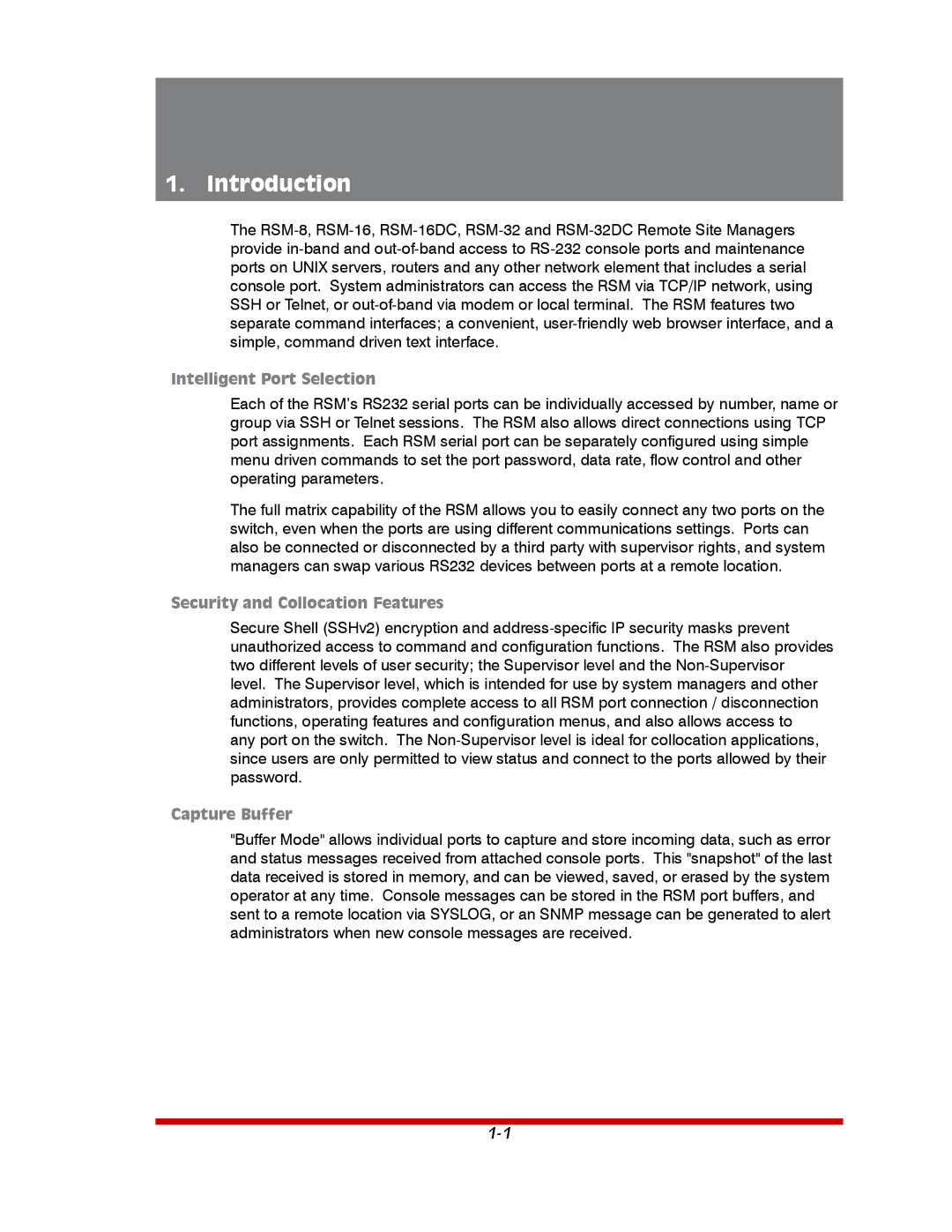
1. Introduction
The
Intelligent Port Selection
Each of the RSM’s RS232 serial ports can be individually accessed by number, name or group via SSH or Telnet sessions. The RSM also allows direct connections using TCP port assignments. Each RSM serial port can be separately configured using simple menu driven commands to set the port password, data rate, flow control and other operating parameters.
The full matrix capability of the RSM allows you to easily connect any two ports on the switch, even when the ports are using different communications settings. Ports can also be connected or disconnected by a third party with supervisor rights, and system managers can swap various RS232 devices between ports at a remote location.
Security and Collocation Features
Secure Shell (SSHv2) encryption and
Capture Buffer
"Buffer Mode" allows individual ports to capture and store incoming data, such as error and status messages received from attached console ports. This "snapshot" of the last data received is stored in memory, and can be viewed, saved, or erased by the system operator at any time. Console messages can be stored in the RSM port buffers, and sent to a remote location via SYSLOG, or an SNMP message can be generated to alert administrators when new console messages are received.
